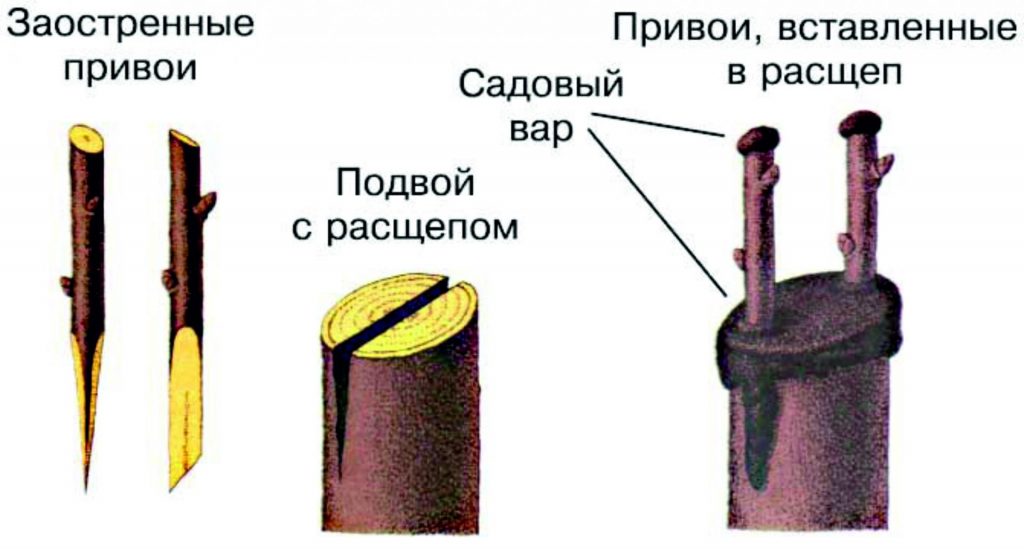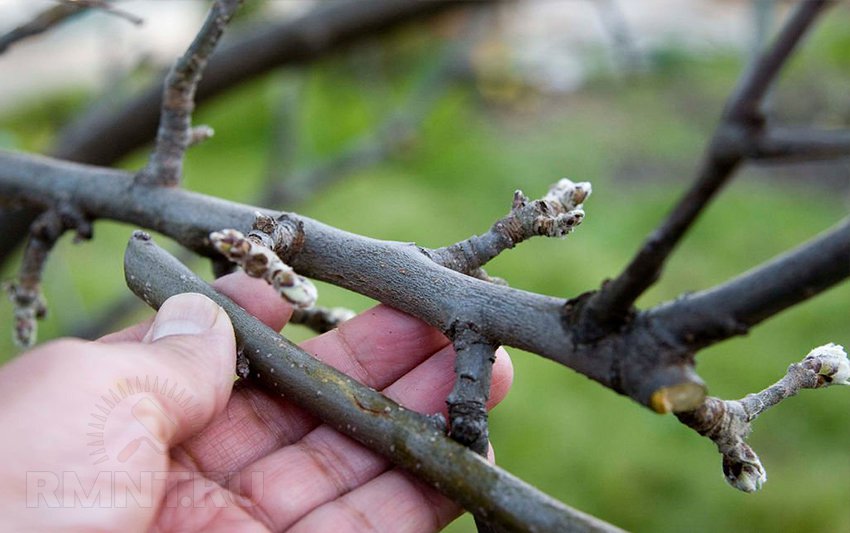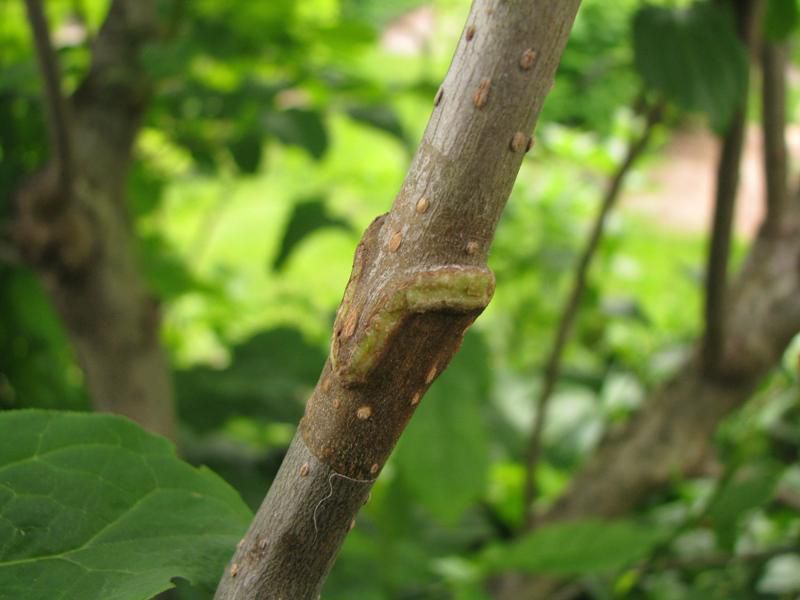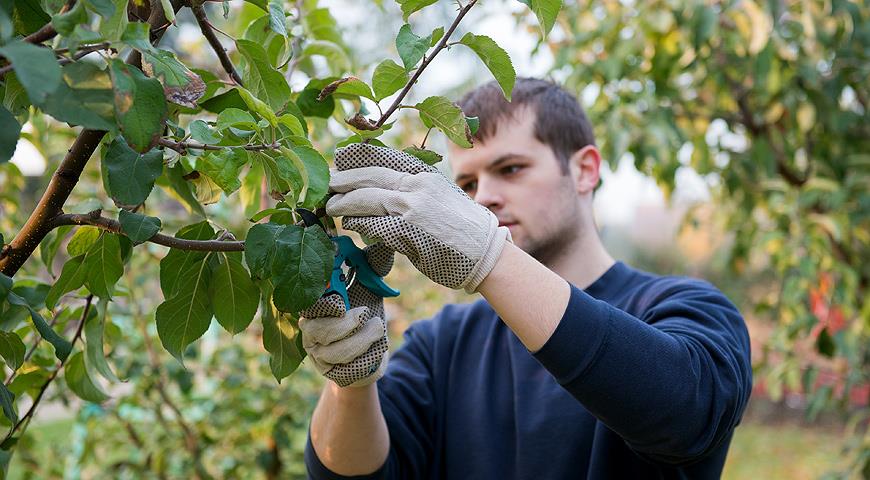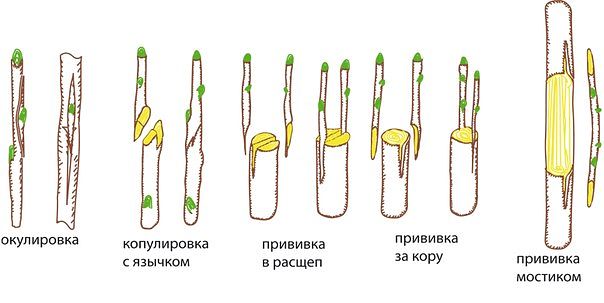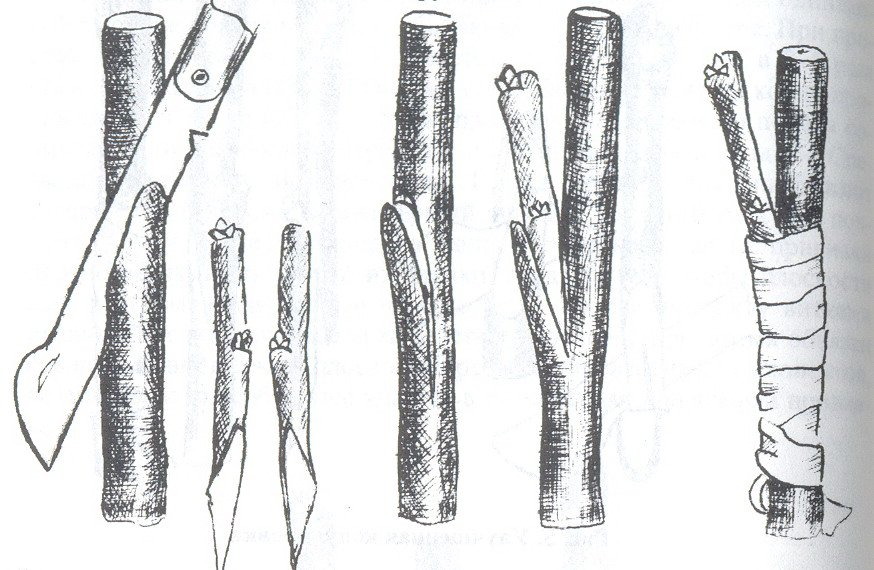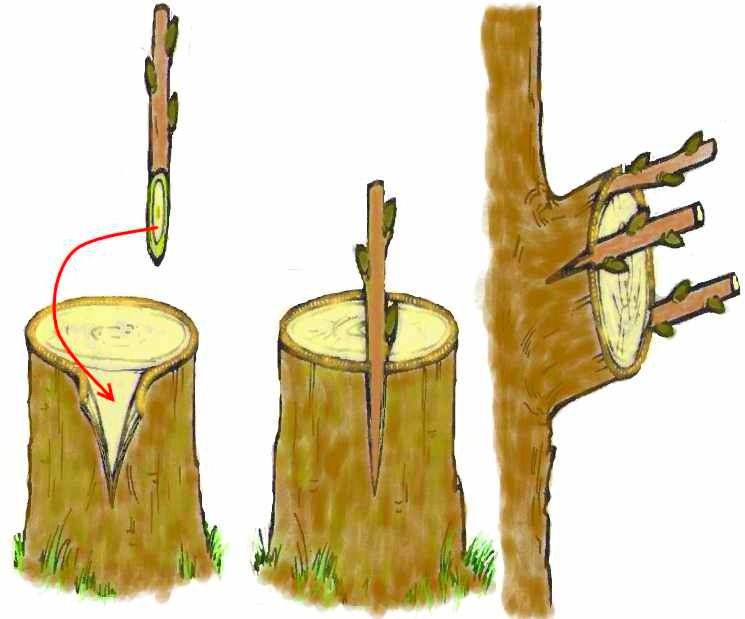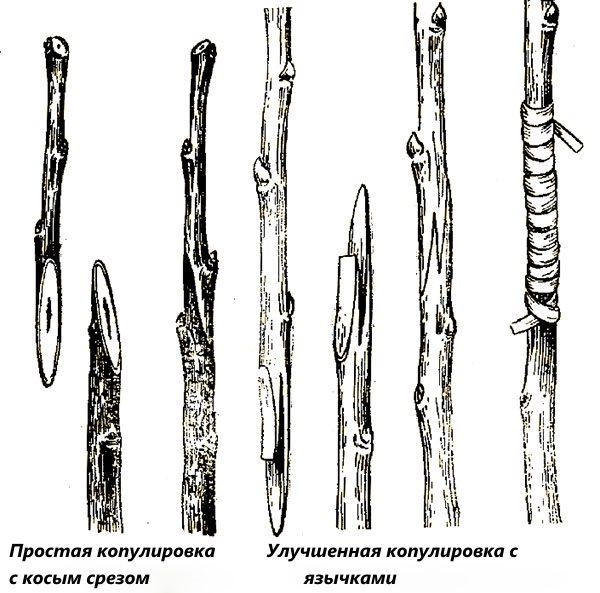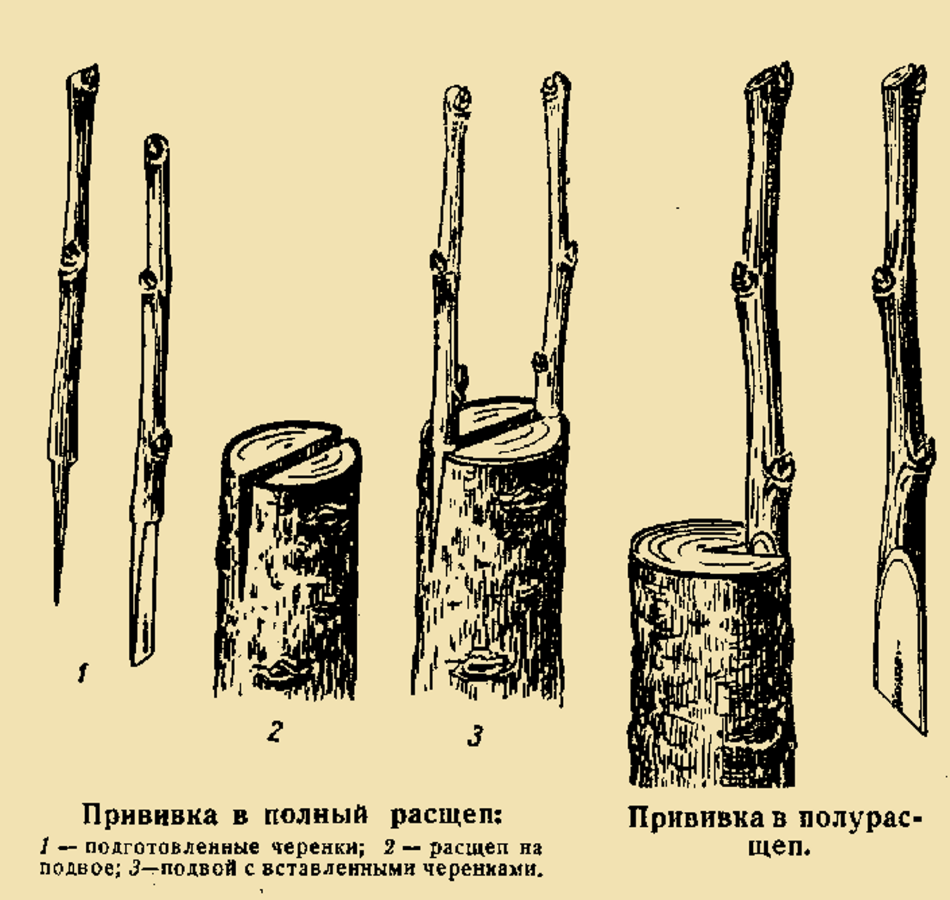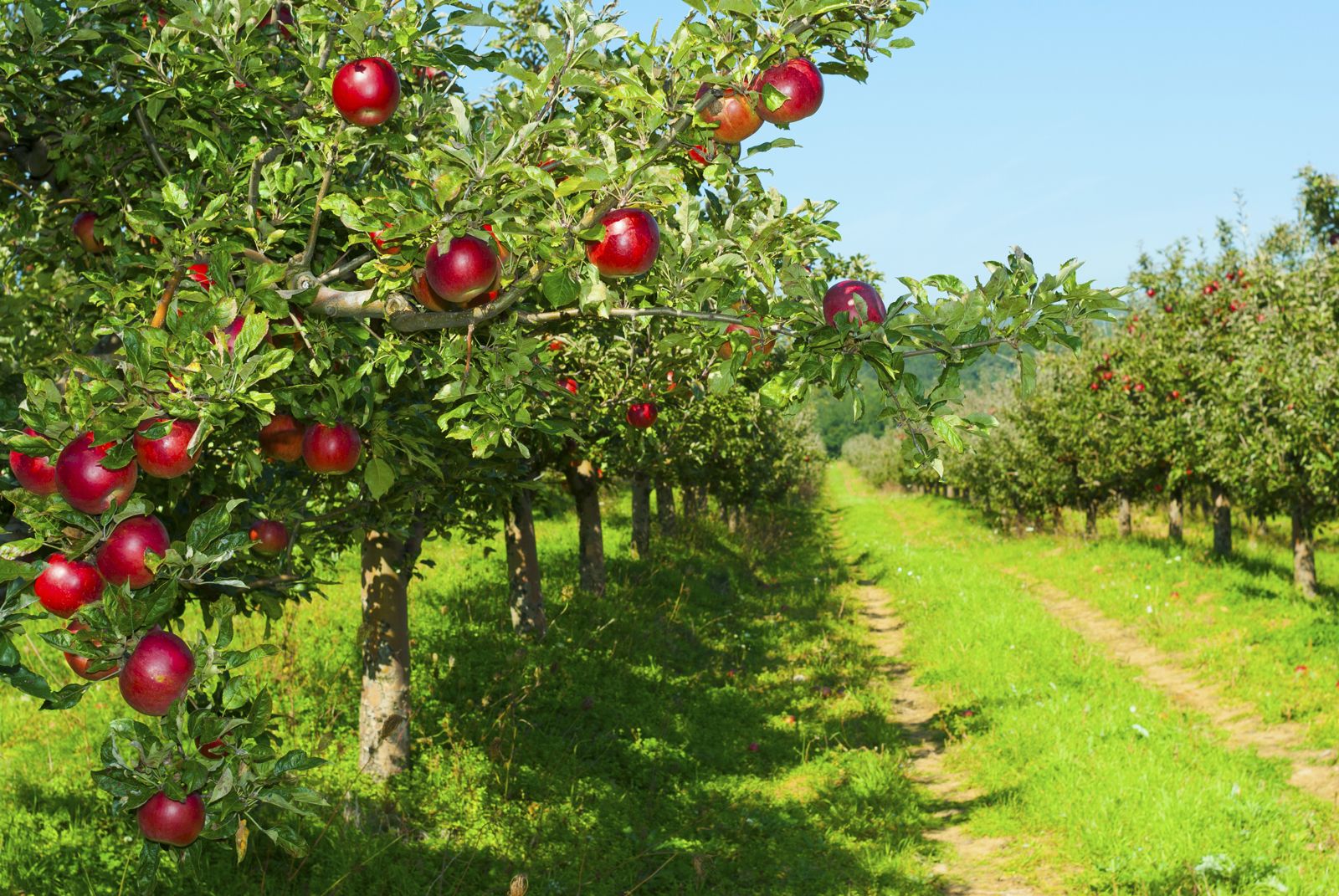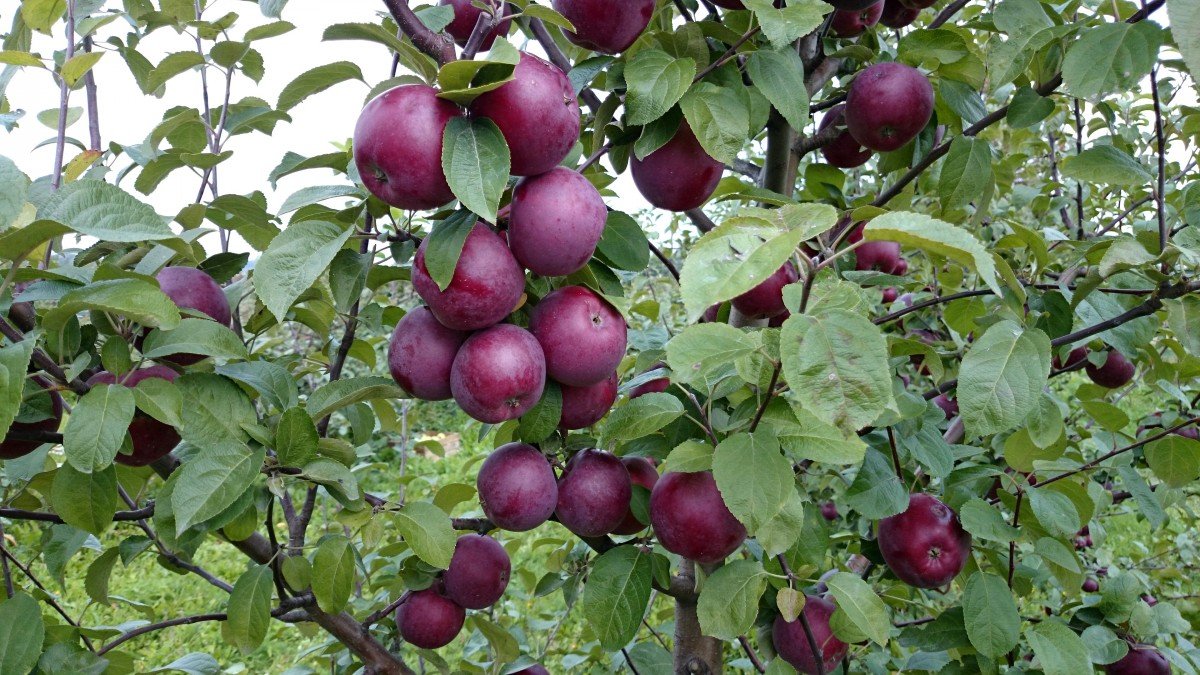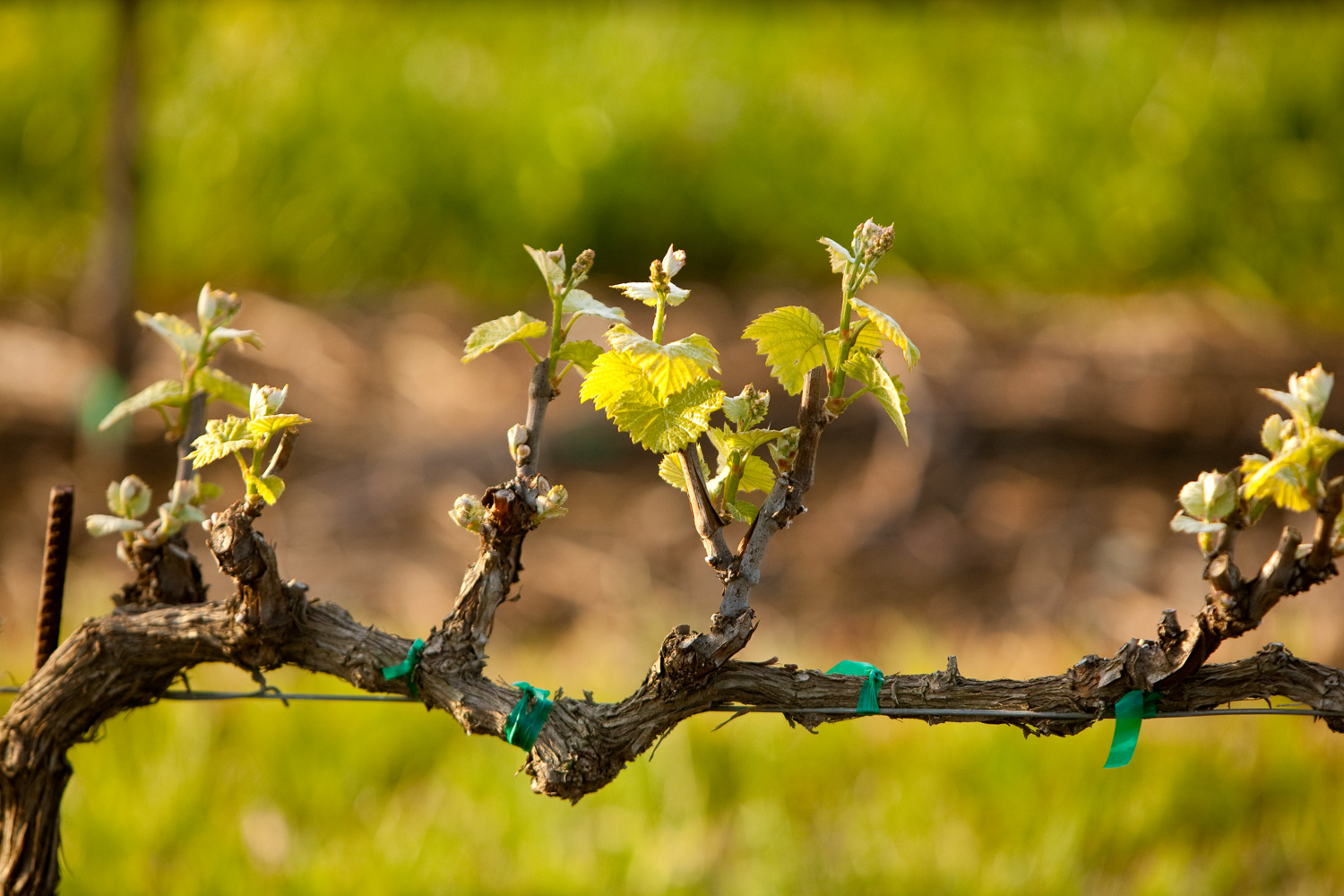Trees are grafted for a variety of reasons. Some gardeners want to rejuvenate the tree, others want to grow several varieties of apples on it at once. In itself, grafting an apple tree in the spring is a simple procedure, but you need to know when, what and under what conditions to perform it.
Content
Why plant an apple tree
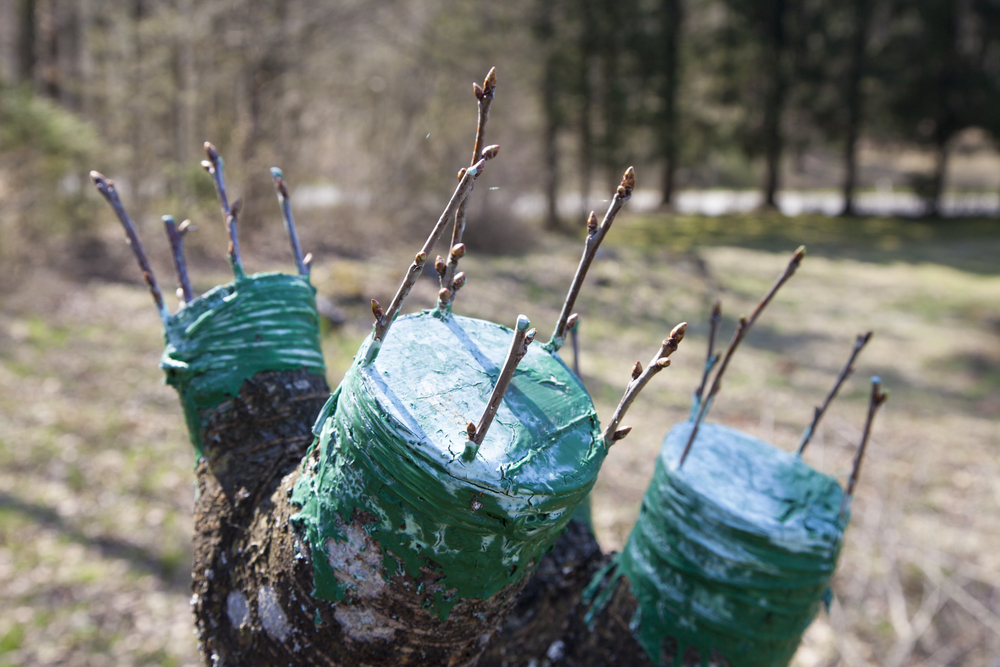
Grafting an apple tree in spring can be done in several ways, the choice depends on the age of the tree and its condition
Vaccination is a selection method that allows you to get several positive results for the gardener. One of them is saving space in the garden. It is achieved by growing several varieties of apples on one tree. Many gardeners do not need large quantities of fruits with the same flavor. Therefore, other varieties are grafted to the selected apple. Moreover, they can ripen at different times and the family will always be with fresh fruit.
With the help of grafting, you can change the appearance of the tree, make it more squat, which makes it easier to harvest. Rejuvenation of a long-bearing plant is also possible. Another positive effect of grafting is that it can be used to save an injured tree by grafting its stalk to another plant.
What you need to know to complete
In specialized literature, terms that are not clear to a beginner are often found. This interferes with the assimilation of information and can lead to mistakes. Therefore, it is necessary to know what terminology experienced gardeners use.
Graft - the part of the donor plant (branch, stalk or bud) that will be grafted to the selected tree.
Rootstock - the plant to which the scion will be attached.
Copulation - grafting using cuttings.
Budding - vaccination with one kidney.
When to vaccinate: timing of work
You can plant apple trees all year round. But in the cold season it is done in one way, and in the warm season in another. In winter, seedlings must be brought into the room, they are given time to acclimatize, and only after that they start breeding work. This approach is associated with certain troubles and inconveniences. Therefore, it is better to postpone these matters for the warm season.
Grafting an apple tree in the spring will give better results, will be carried out more quickly and successfully. In winter, trees are weakened and dormant. In the spring, the movement of juices begins and the rootstock will more easily tolerate the vaccination, since this procedure is associated with injury. The same can be said about the donor tree. It will more easily tolerate the removal of the cuttings and buds.
Russia is a country with several climatic zones. Therefore, the optimal timing of the vaccination for each region is different. The best time for the procedure is the period of the onset of sap flow and swelling of the kidneys.Many gardeners also take into account the lunar calendar. According to him, the best time for breeding work is the growing moon.
The weather is also important. It should be warm, calm and not rainy. The optimal time of the day is morning or evening.
Tools and materials
To complete the task, you will need a small set of tools and materials:
- hacksaw for cutting thick branches:
- sharp knife;
- polyethylene;
- garden var.
With the help of these tools, trees were planted from the very beginning of breeding work. But progress does not stand still, and today a specialized tool has been developed and successfully used to minimize the risk of injury to plants - a grafting pruner. It is necessary for both beginners and professionals.
The shape of the blade differs from the usual grafting secateurs. On it, it is such that it allows you to make a curly cut, which provides the best mating between the stock and the scion. With this pruner, you can perform three operations:
- make a cut with a groove in which the handle will be installed;
- cut the stalk so that it fits exactly into the groove;
- perform budding.
The trade network offers different models of grafting secateurs, amateur and professional. Any of these tools are easy to use. But amateur ones differ from professional ones in that they can cut branches of a smaller diameter and are not equipped with a spare blade. The main difference lies in the quality of the steel and the assembly of the tool.
Often, manufacturers of inexpensive amateur models complete them with various attachments designed to increase the functionality of the pruner and expand its capabilities. However, all these devices cause a lot of criticism from experienced gardeners. Therefore, a beginner is recommended to use only a pruning shear knife.
Scion and rootstock selection rules
The success of the grafting directly depends on the correct choice of the scion and rootstock. The stock is selected first. The tree must be healthy, without damage to the bark and dry branches, and have good winter hardiness. You can graft adult and young plants. If the purpose of breeding is to modify the tree, choose a young one, up to 3 years old.
There are varieties that are ideal for rootstock. These are most often those apple trees that develop well and bear fruit in given climatic conditions. Therefore, each region has its own rootstock varieties.
Choosing a donor tree also requires careful attention. The apple tree must be an adult, bearing fruit for at least two years. This is the only way to understand what the taste of the fruit is and how productive and hardy the variety is. Optimally, the rootstock and scion should be of close, related varieties. This will provide better compatibility. But this is an optional condition, since with the help of vaccination, you can also domesticate the wild.
How to prepare cuttings
The branches for picking cuttings must be over one year old, with intact bark, and no signs of disease. It is best to stock up on cuttings at the beginning of winter, when the air temperature reaches -10 ° C. In this case, the branches will be more seasoned.
Such cuttings can be safely stored at -2 ° C in a refrigerator or basement until spring. If there is no possibility of storage by the above methods, the cuttings are wrapped in a damp cloth and placed in a cool place. After the snow falls, they are immersed in a container with sawdust or peat, and buried in a snowdrift.
Procurement rules
- The handle should have 3-4 intact buds.
- The best part of the branch is the middle one.
- The upper cut should be made obliquely and located at the level of the upper eye.
- The lower cut is made in accordance with the selected method of inoculation.
Types of grafting apple trees in spring
There are several types of apple grafting.
- Lateral incision implantation.
- Grafting for the bark.
- Copulation with a tongue.
- Cleft inoculation.
- Implantation into the butt.
- Budding.
Inoculation in the incision
The easiest way to inoculate is in the side cut. You need a sharp knife to work.
- Prepare the lower end of the cutting by cutting it obliquely.
- On the selected branch, the rootstock recede from its base 20–25 cm.
- Place the knife at an angle of 20-25 °.
- An incision is made through the bark and a few millimeters of wood are cut through.
- The lower end of the cutting is inserted into the cut on the rootstock. Strive to achieve a perfect fit. The result should be a spear.
- Tie up the junction with plastic wrap.
- Covered with garden var.
Method "for the bark"
This method of grafting is considered the best for adult trees, which they want to plant a winter-hardy and productive variety. This makes the stock stronger and more resilient. The procedure helps to acclimatize a variety that does not develop well in these climatic conditions.
The bark grafting is the most difficult and meticulous. Requires precision of movement and care. The difficulty lies in the fact that the lower end of the cutting, due to the specifics of the method, cannot fit snugly to the rootstock branch.
This method is used only in spring, during the movement of juices inside the tree. The bark is easiest to separate from the wood during this period of the year.
- In order for the rootstock branch to grow evenly, up to 4 cuttings can be grafted onto it. Subsequently, the most powerful of them is left, the rest are removed.
- The inoculation is carried out at a height of 100-110 cm from the ground surface.
- With a sharp knife, cut the bark so that it separates from the wood. The incision should be 4–5 cm long.
- Shift the bark slightly, exposing the wood.
- In the lower part of the cutting, an oblique cut is made, the length of which should correspond to 3-4 diameters of this scion. It is important that the cut on the handle is as smooth and even as possible. The kidneys should be pointing up. This is an important point, since many beginners confuse the upper end of the cutting with the lower during grafting. This is an invalid error.
- A cutting is made under the bark.
- Press as tightly as possible.
- Tied up.
- The bandage is fixed with a garden pitch.
In this method of vaccination, the speed of work is important. Therefore, inexperienced gardeners are advised to practice making cuts on unnecessary branches. It is advisable to use polyethylene strips for strapping. But duct tape, which is wrapped around the branch with the adhesive side up, is also suitable.
Copulation with tongue
For copulation with a tongue, cuttings are harvested from annual healthy branches. At the time of grafting, they should have swollen buds. Therefore, the apple tree is grafted in the spring.
A prerequisite for successful copulation with a tongue is the same diameter of the scion and rootstock. A slight excess of the rootstock section is allowed. But the stalk must be thinner. The graft is pre-cleaned of foliage, if any. You can only leave the stalks of the leaves.
This method of inoculation requires a grafting secateurs. With this tool, you can make curly notches and protrusions in branches. Wood is cut out on the rootstock, bark on the scion. The length of the groove on the rootstock should coincide with the protrusion (tongue) on the scion. Then they act according to the standard scheme:
- scion is brought into the cutout on the rootstock;
- perform strapping;
- coat the junction with garden pitch.
Copulation with a tongue is one of the most difficult ways to graft an apple tree in the spring. Therefore, it is advisable for beginners to pre-practice in performing slices and joints.
Into the cleft
Splitting is the optimal method of grafting for young trees at the age of 3-5 years. It is important that the diameter of the rootstock branch does not exceed 5 cm. Otherwise, the incision will drag on for a long time and begin to rot.The inoculation is carried out at a height of 20–25 cm from the ground on a strong skeletal branch. It is difficult to make an even and accurate cut in a thick branch with a knife. Therefore, a sharp ax is used to accomplish this task.
- With a quick movement, the rootstock is split to a depth of 8-10 cm.
- The lower end of the scion is cut at an acute angle so that the length of the cut coincides with the depth of the split. The cut can be one-sided or two-sided. The work is done with a sharp knife.
- The gap on the stock is opened by inserting a suitable spacer into it: an awl, a screwdriver, a branch.
- The scion is inserted into the stock so that the places of desalinization coincide. Up to 4 cuttings can be placed in one split. In this case, you will need to make a cruciform split.
- Take out the spacer.
- Tie with twine. The use of plastic tape is optional.
- The grafting site is treated with garden varnish.
- The gap in the rootstock is covered with plasticine or clay.
How to get such a vaccine: the way to the video
Implantation
To inoculate an apple tree by implantation, the diameters of the branches of the rootstock and the scion must match.
- The rootstock branch is cut at a height of 15–20 cm from the ground.
- Cut the resulting stump obliquely, stepping back 2 cm from the end of the branch.
- The upper end of the cutting is coated with garden pitch.
- The lower end of the cutting is cut so that the cut planes of the scion and the stock coincide.
- Press the stalk to the stock.
- Tied with a polyethylene or polyvinyl chloride tape. The second option is the most convenient, since the PVC tape has the ability to stretch, which will ensure the free growth of the tree at the grafting site.
- Put a plastic bag on a stump with a handle and tie it up. When the first leaves appear, the bag is removed.
Budding
Budding is otherwise called "kidney grafting" or "eye grafting." This method is recommended for beginners, it is so easy to perform and shows a high survival rate.
The best results are obtained with the summer grafting performed during the second sap flow in apple trees. This is the beginning to mid-August. At this time, the bark is elastic and well cut. A one- or two-year-old branch is used as a stock, the optimum thickness of which is 10-15 mm. A few days before grafting, the tree is well watered.
Cuttings are harvested in advance, a few days before the vaccination. Leaves are removed from them, leaving petioles. Cut the cuttings in the morning, put them in a container of water, and place them in a shaded place.
Graft:
- Having retreated 20-25 cm from the ground level, a T-shaped cut is made on the selected branch with a knife. The horizontal incision is 10 mm long, the vertical incision is 25 mm.
- The bark of a vertical cut is raised with the tip of a knife.
- They take a stalk, blow off the dust from it, choose a well-formed bud.
- Cut it off so that a thin layer of bark 25 mm long is removed.
- Press the scion to the cut on the rootstock.
- The strapping is made with plastic tape so that the bud of the scion remains open.
After 14-15 days, check whether the scion has taken root. To do this, they touch the bark near the kidney, and if it falls off easily, engraftment was successful. If the bark is firmly adhered, the bud may dry out later. In this case, you can repeat the procedure, engraft the second kidney below the first or to the side of it.
Method of budding apple trees in spring: video
Mistakes of novice gardeners
The most common mistake of beginners when carrying out budding is the wrong kidney selection. You can not take the awakened (opened). The best choice is a peephole formed in the last season.
Another common mistake is using dirty inventory. Keep your knife, pruner, or ax clean. It is advisable to degrease the blades and wipe dry with a cloth.
For grafting in a lateral incision, beginners often take cuttings with 1–2 buds. It is necessary to use a scion with 3-4 eyes.
Caring for a grafted tree
An established vaccine requires attention and care. Its goal is to provide the young branch with optimal conditions for development.Therefore, they remove all the leaves and shoots that block the sunlight and draw off nutrients.
The harness is regularly inspected and, if necessary, corrected or changed. With the active growth of the cutting, the bandage is loosened. Injured rootstock areas should be completely overgrown 2.5–3 weeks after grafting. Living buds and smooth bark indicate that the cutting is developing well.
A beginner should definitely be guided by the recommendations of experienced gardeners, which will help prevent mistakes in grafting an apple tree in the spring. Gradually, the skill of forming incisions will appear, and the selection procedure will become not only easy, but also pleasant.
